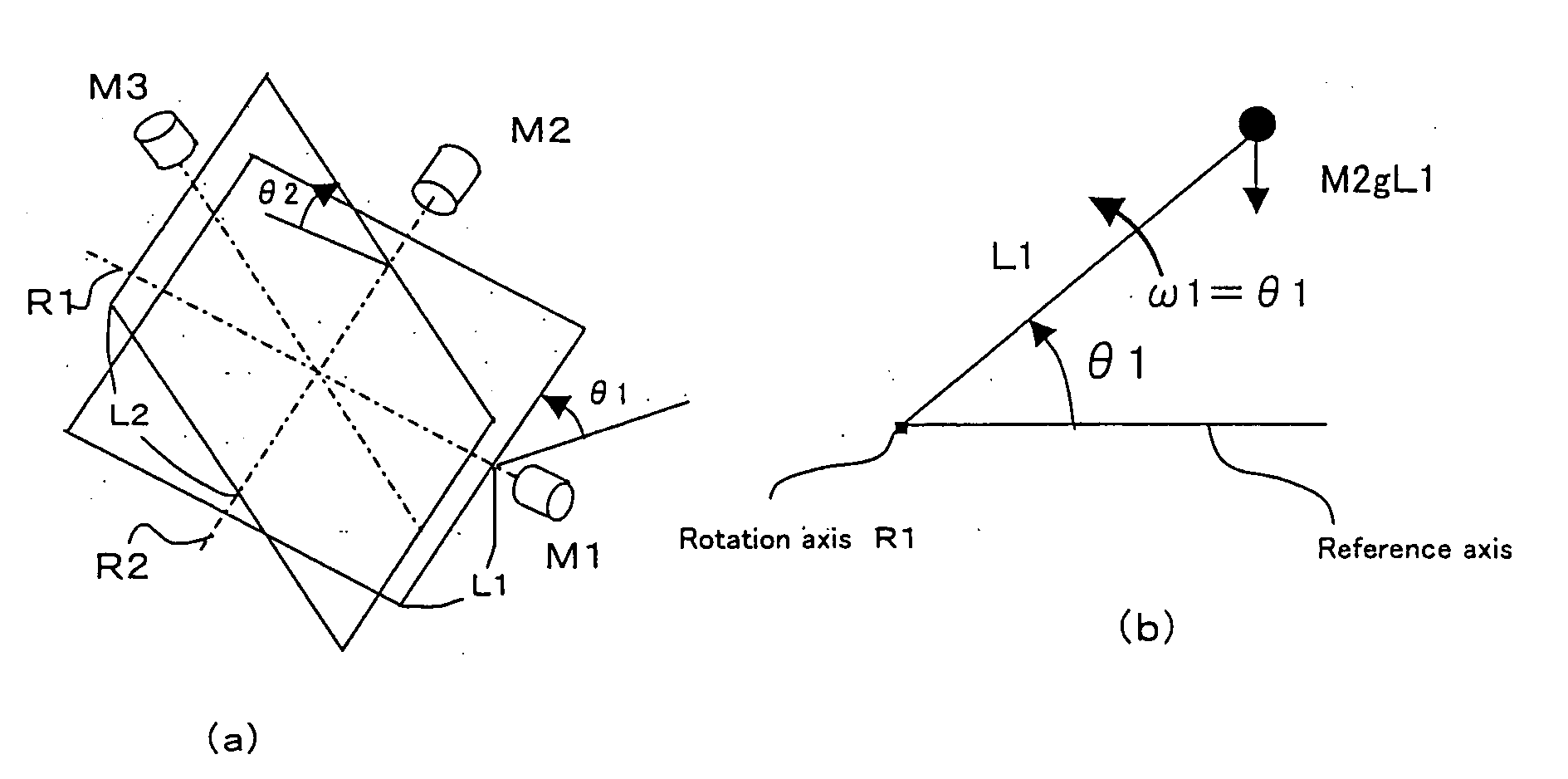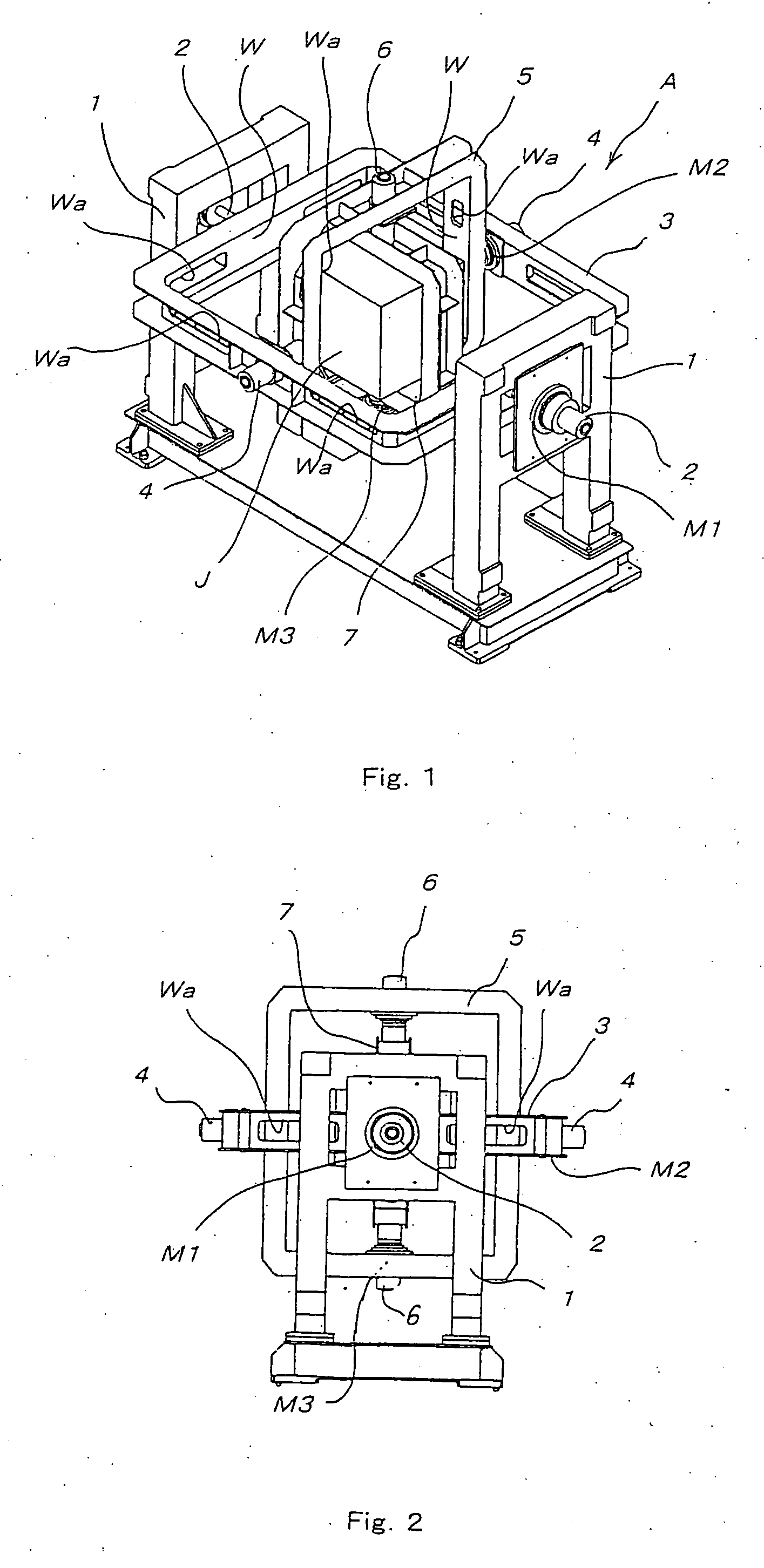Three-axis motion table
a three-axis motion and motion table technology, applied in the direction of instrumentation, electric programme control, program control, etc., can solve the problems of increasing the inertia moment and weight, affecting the operation of the three-axis motion table, and affecting the operation of the hydraulic motor. , to achieve the effect of reducing the operating bandwidth, and reducing the inertia momen
- Summary
- Abstract
- Description
- Claims
- Application Information
AI Technical Summary
Benefits of technology
Problems solved by technology
Method used
Image
Examples
first embodiment
[0044] The first embodiment will be described with reference to FIGS. 1 through 5.
[0045]FIG. 1 is the perspective view of a three-axis motion table indicated by reference symbol A. FIGS. 2 through 4 are the front view, the top view, and the side view of the three-axis motion table A, respectively.
[0046] In the three-axis motion table A according to FIGS. 1 through 4, an outside frame 3 is rotatably attached around a first rotation axis 2 bridged by a pair of bridge-shaped supporting legs (1, 1) opposite to each other.
[0047] The outside frame 3 is rotatably attached with an intermediate frame 5 around a second rotation axis 4 bridged at a position opposite to the outside frame 3.
[0048] The intermediate frame 5 is rotatably attached with an inside frame 7 around a third rotation axis 6 bridged at a position opposite to the intermediate frame 5.
[0049] The inside frame 7 has a mechanism for holding a simulated object J such as an artificial satellite. One of the supporting legs (1, ...
second embodiment
[0061] The second embodiment as shown in FIGS. 6 and 7 provides such automatic control.
[0062] Except elimination of the counter weights CW2 and CW3, the second embodiment provides an external view similar to that of the first embodiment as mentioned above.
[0063] The second embodiment calculates a moment due to unbalance (resulting from weights of the electric motors M2 and M3) caused by elimination of the counter weights CW2 and CW3 at a specified control interval. To cancel effects of such moment, the embodiment provides control to add a cancellation signal to a target signal for the rotation angle or the angular speed of the electric motors M1 and M2.
[0064] With reference to FIG. 6, let us assume that M2 and M3 respectively denote masses of the electric motors (M2, M3); g denotes gravitational acceleration; L1 and L2 respectively denote distances from rotation centers of the outside frame and the intermediate frame to the corresponding electric motors; θ1 and θ2 denote rotation ...
PUM
 Login to View More
Login to View More Abstract
Description
Claims
Application Information
 Login to View More
Login to View More - R&D
- Intellectual Property
- Life Sciences
- Materials
- Tech Scout
- Unparalleled Data Quality
- Higher Quality Content
- 60% Fewer Hallucinations
Browse by: Latest US Patents, China's latest patents, Technical Efficacy Thesaurus, Application Domain, Technology Topic, Popular Technical Reports.
© 2025 PatSnap. All rights reserved.Legal|Privacy policy|Modern Slavery Act Transparency Statement|Sitemap|About US| Contact US: help@patsnap.com



